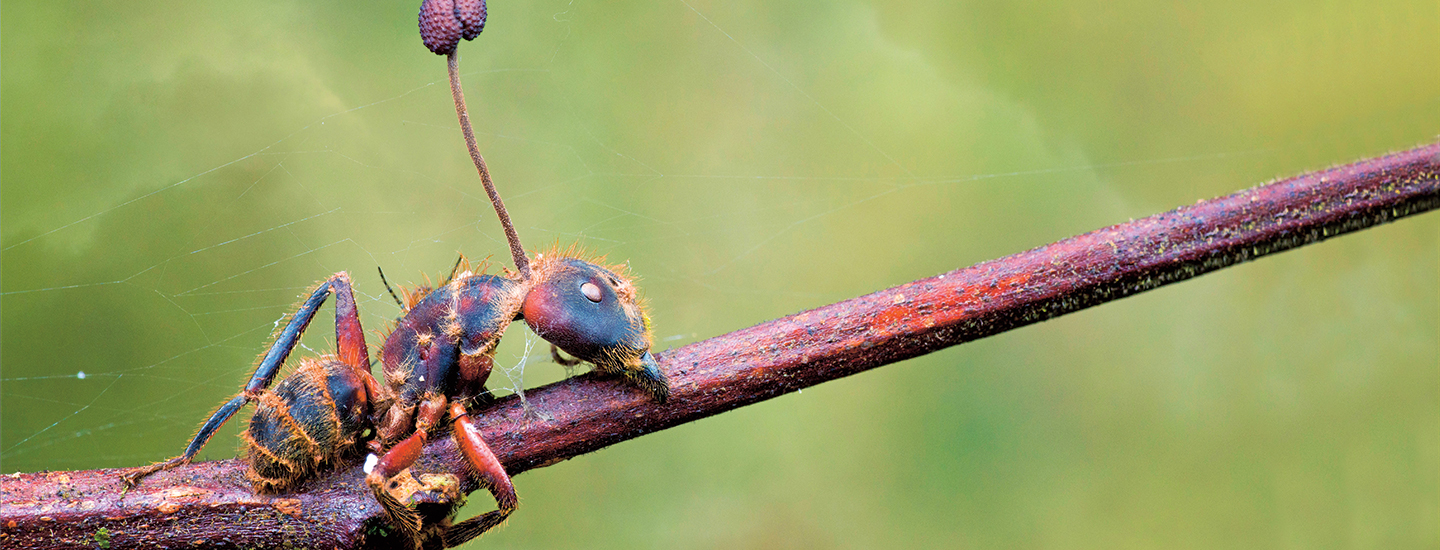From the depths of a dark graveyard, people rise from the dead. They wander the streets as zombies—mindless monsters guided by forces beyond their control.
This scene happens only in horror movies. But something just as spooky sometimes takes place in real life. Weird life-forms called parasites can invade the brains of living animals. They can control the behavior of their hosts, turning them into real-life zombies! Their victims include insects, rodents, and snails.
Picture a dark graveyard. From its depths, people rise from the dead. They wander the streets as zombies! Forces beyond their control guide these mindless monsters.
This scene happens only in horror movies. But something just as spooky can take place in real life. The brains of living animals are taken over by weird life-forms. They’re called parasites. They can control their hosts. The hosts become real-life zombies! Parasite’s victims include insects, rodents, and snails.

